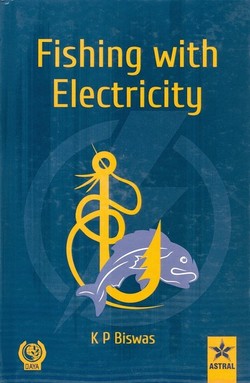
Fishing with Electricity
By
K.P. Biswas
Preface
Fishing with electricity first started with the patent granted to Mr. Isham Baggs, living in Islington, London in 1863. Following Isham Bagg's work, electric fishing developed in different regions in different environments. Notable among them is the work of Holzer (1932) in Germany. In the early 20th century Japanese fishermen were using induction coil to drive eels out of their burrows into a net. Larssen in 1912 took a patent for the use of electricity to catch a variety of aquatic organisms, from fish to seals.
Scientists use electrofishing for fish population survey in aquatic environment, mainly in the rivers and streams to monitor the size of population and determine the species in a community.
The basic principle involves in creating an electrical field in the water to excite the muscular system through peripheral nerves for involuntary movement of fish towards the electrode and get stunned. When the fish are stunned, they often float near the surface of the water and can be removed from the electrical field.
When a fish swims into a weak electrical field, it may not be affected at all. A threshold electric field should be created in the water in order to affect the fish.
When the electrical strength in the water is sufficient to allow transport of charged ions across the nerve cells of fish body, the fish's muscle will undergo involuntary contraction. The contracts will result to increased exercise of muscle and build up lactic acid in blood stream and there will be a cramp in the fish muscle. When the fish cramps up , it floats to the water surface and can be caught it effectively . Usually 5 to 10 seconds are required to stun the fish.
Once the fish is removed from electrical field and kept in aerated water, the aeration and cool temperature will recover the fish after paying the oxygen debt. The lactate in the blood stream and cramping must be treated with rest and good oxygen supply. The recovery time of fish is generally a minimum of four hours, but may be extended up to twelve hours.
The author, in India, had developed an "electric seine net” in 1962 after conducting laboratory experiments with Indian fish species. This electrically charged net was successfully used at Dhauli, Odisha for catching fishes from burrows and bottom dwellers along with columner fishes from earthen ponds of various sizes and depths.
He also developed a DC fish catcher producing electric field of 110 volts in the water. The catcher has been successfully tested with suitable electrode configuration and demonstrated before an ICAR peer review team on 31st August, 2016 in the Fisheries Faculty of West Bengal University of Fisheries and Animal Sciences. The team leader suggested the author to make the technique aware to the people of our country.
The suggestion initiated the author to prepare the manuscript of the" Fishing with Electricity ":
Contents
1 – What is Meant by Elctrofishing?
2 – Principles Behind Electric Fishing.
3 – History of Electrical Fishing.
4 – Electrical Fishing Technique Adopted in Different Regions.
5 – Electrofishing Boat.
6 – Fishing with Electricity in other Countries.
7 – Electrical Fishing in India.
8 – Electrical Fishing in Sea Water.
9 – System Components – Electric Fishing Machine.
10 – Factors Affecting the Efficiency of Electrical Fishing Gear.
11 – Electrofishing Induced Injury and Harmful Effects.
12 – Hazards of Electrofishing : Precautions and Safety Measures.
13 – Electrofishing Policy and Code of Practice.
14 – Electrofishing Terminology.



ساحة النقاش